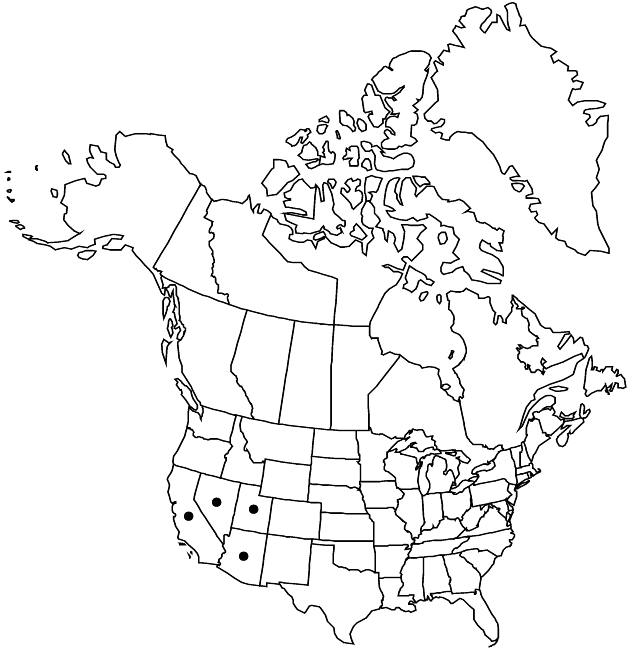Baccharis sergiloides
in W. H. Emory, Rep. U.S. Mex. Bound. 2(1): 83. 1859.
Shrubs, 50–200 cm (freely branched, broomlike). Stems erect, fastigiate, striate-angular, green, glabrous, resinous. Leaves cauline (proximal withering and sparse by flowering); sessile; blades (1-nerved) broadly oblanceolate to obovate or spatulate, 10–35 × 5–15 mm (thick, firm), bases attenuate, margins entire or irregularly serrate (teeth 1–4, distal leaves entire), apices obtuse to acute, faces glabrous, gland-dotted, resinous. Heads (sessile or short-pedunculate on lateral branches) in crowded paniculiform arrays. Involucres funnelform to campanulate; staminate 3–5 mm, pistillate 3–5 mm. Phyllaries ovate to linear-lanceolate, 1–5 mm, margins scarious, erose, medians green, apices rounded to acute, glabrous, gland-dotted, resinous. Staminate florets 24–33; corollas 2–3.5 mm. Pistillate florets 15–30; corollas 1.6–2.7 mm. Cypselae 1–2 mm, prominently 10-nerved, glabrous; pappi 1.7–3.1 mm. 2n = 18.
Phenology: Flowering Jul–Oct.
Habitat: Gravelly or sandy streambeds, dry washes, grasslands
Elevation: 100–1800 m
Distribution

Ariz., Calif., Nev., Utah, Mexico (Baja California), Mexico (Sonora)
Discussion
Baccharis sergiloides is recognized by its fastigiate, broomlike habit, and large obovate leaves that often wither before flowering. It differs from B. sarothroides in its larger leaves, more or less sessile and lateral heads, and smaller florets and fruits.
Selected References
None.